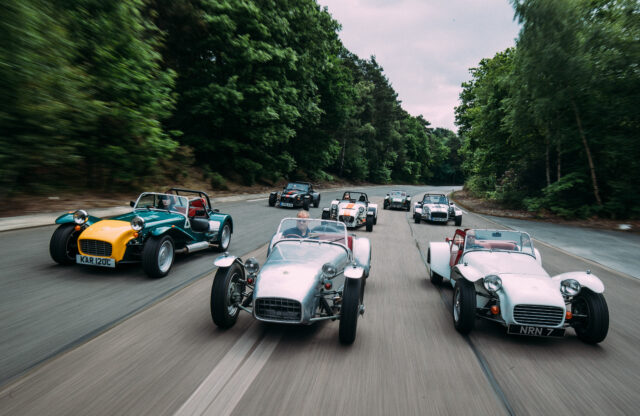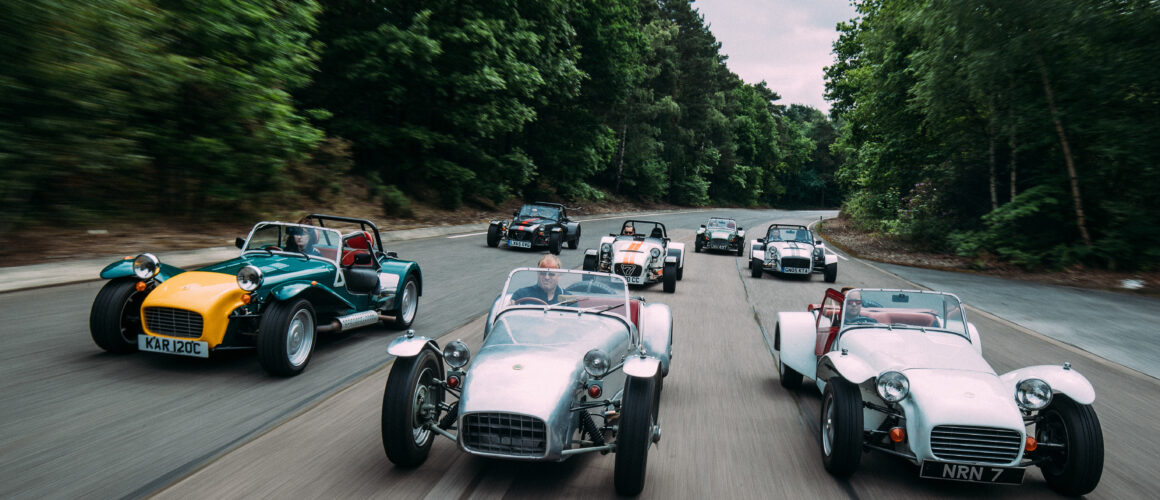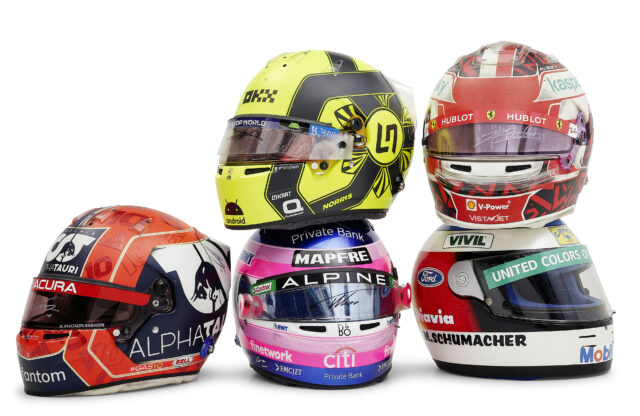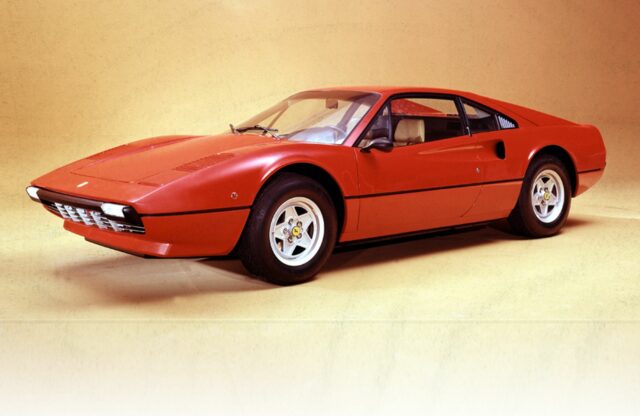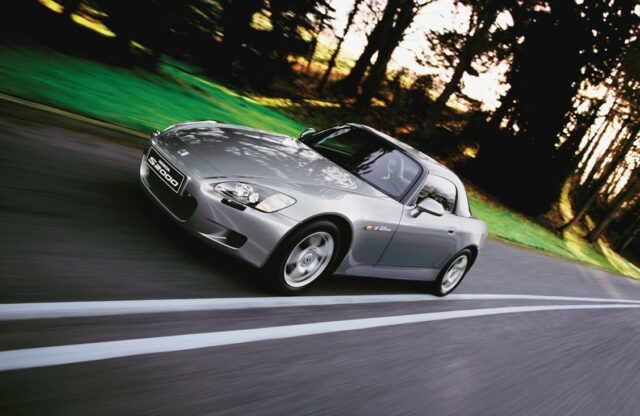WORDS: NATHAN CHADWICK | PHOTOS: CATERHAM/WIKIMEDIA COMMONS
In 1970, Colin Chapman had his eyes on the future, taking on Europe’s most esteemed supercars. By 1972 that dream started to crystallise with the Giugiaro-penned Esprit. However, to move the company on meant ditching the Lotus kit-car image – and the Seven, dating back to 1957, was no longer a part of the firm’s future.
In 1973 Caterham Cars of Surrey picked up the rights from Lotus, and it has been producing the model ever since. The first examples were effectively the left-over Series IV (S4) cars produced by Lotus. A departure from earlier models, it was boxy, larger, better equipped and more stylised. The 1970s design did little to broaden the Seven’s market appeal, however, and it didn’t prove popular with enthusiasts. Therefore, once the supply of Series IV cars ran dry, Caterham started producing the Series III (S3) once again, making gradual improvements as production went on.
The S3 still forms the basis of the standard Caterham chassis today, although a larger SV chassis is now also available. Wide-ranging changes have been made to the Seven over the years, to the extent that not a single part of the modern car is shared with the original. However, the DNA of the very first Lotus Seven has remained consistent.
Andy Noble from Sevens & Classics explains the appeal: “The Seven may not do many things, but what it does do, it does better than any other car. And that is just as applicable today as it was when the model was created back in the 1950s.
“As cars progress in safety, technology and performance, they inevitably gain weight, and that’s where the Seven scores its points. It’s merely a case of easy physics; the lighter the car, the easier it will accelerate, turn and stop. It’s a pretty simple principle, really.”
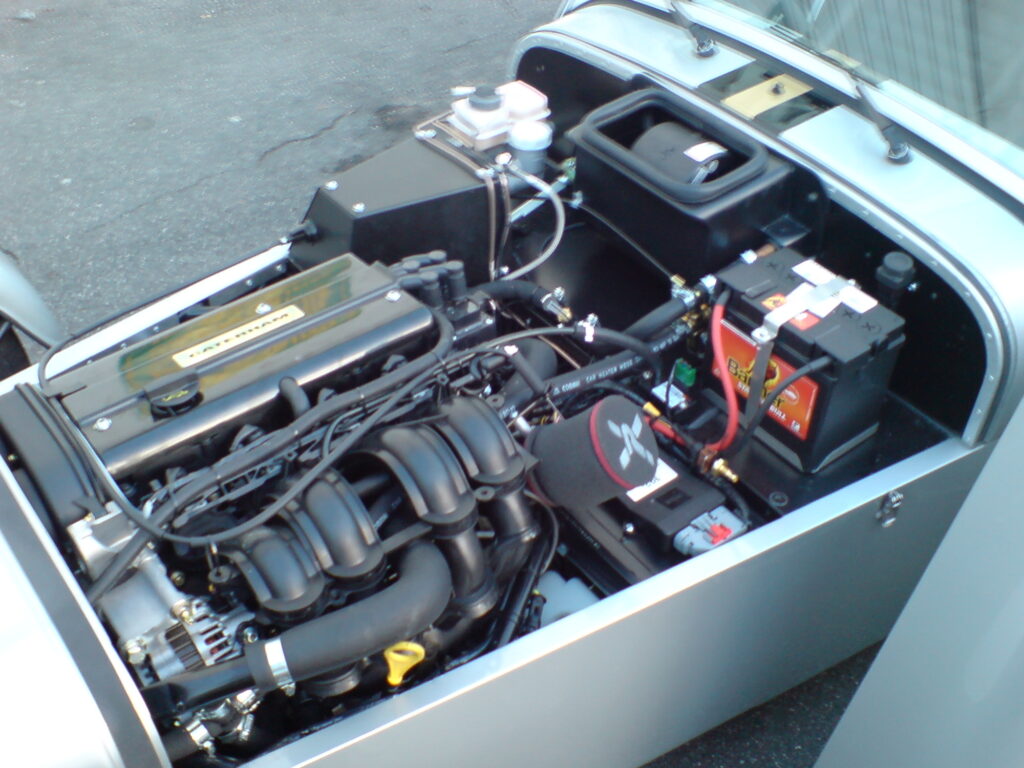
ENGINE
Many makers have seen their powerplants grace the Caterham Seven’s engine bay over the years. Four-cylinder units from the likes of Rover, Ford and Vauxhall are most often used. Regardless of the origin, check that the motor has been properly maintained – especially if the car has spent a lot of time on track. Circuit work is what the Seven is designed for, so it shouldn’t put you off as long as the maintenance schedule has been stringently adhered to.
Rover K-series engines can suffer from head-gasket leaks, but these aren’t an issue if addressed early. However, such problems aren’t overly prevalent in the Seven – the MGF’s motors were more notorious for this, thanks to inadequate cooling.
Regardless of mileage, oil changes should be done annually. Reduce this to every 1000-1500 miles if the car is being used on track. Noisy tappets in K-series cars can be indicative of oil starvation by hard use on the circuit, or could also be caused by oil foam blocking the feed pipe.
The engines are relatively unstressed, thanks to a mere 500kg bodyweight to haul around, meaning reliability is strong.
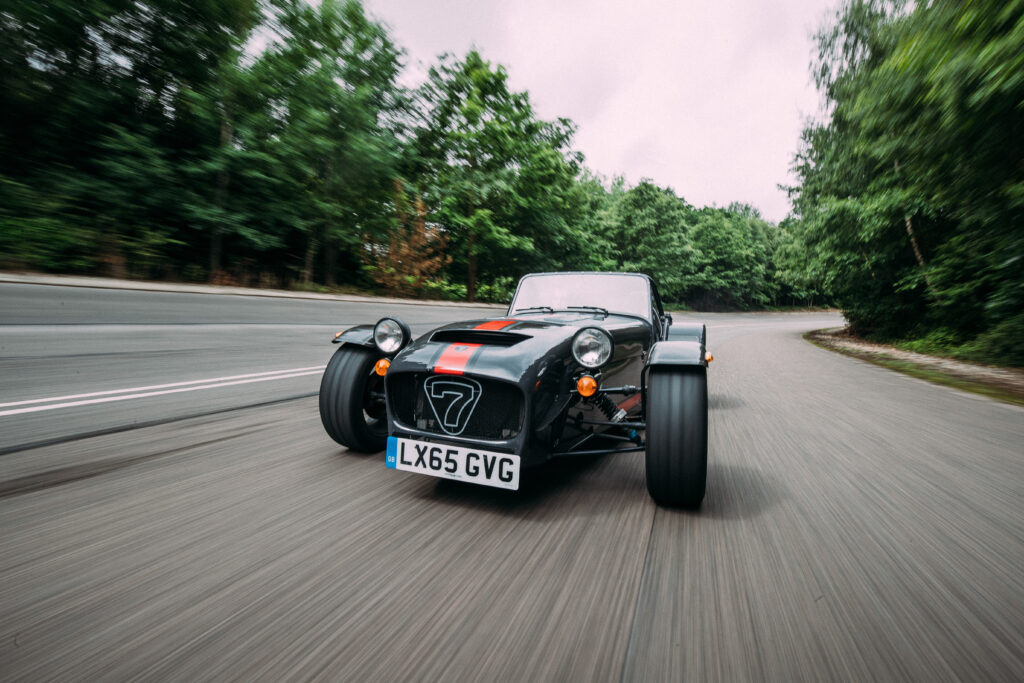
GEARBOX
All boxes are manual, and are either a Ford T9 five-speed or a Caterham-developed six-ratio. Early Sevens came with four- speed units, while some Caterhams have Honda or Suzuki motorcycle engines with corresponding bike gearboxes, which means sequential shifting. These are great on track, but unrefined for road use, and very loud if they have a mechanical reverse gear installed. The Ford T9 is a cost-effective and durable unit, yet the six-speeder is more desirable and gets the most from the Seven’s small engine.
Gearbox issues are uncommon thanks to the car’s low weight; even when under duress, the transmissions aren’t worked hard. Check for all the usual things such as a precise, crisp change, and that the clutch biting point isn’t too close to the floor. Crunching into gears can indicate worn synchros.
The car’s lack of sound deadening and the sparse cabin mean there is noticeable transmission noise from the central tunnel. If you’re told a potential purchase has a limited-slip differential, check to ensure it’s present. Jack up the back of the car and turn a rear wheel; the other rim will turn in the same direction if an LSD is installed. Later cars with a Titan LSD have internal carbon plates fitted, which can fail.
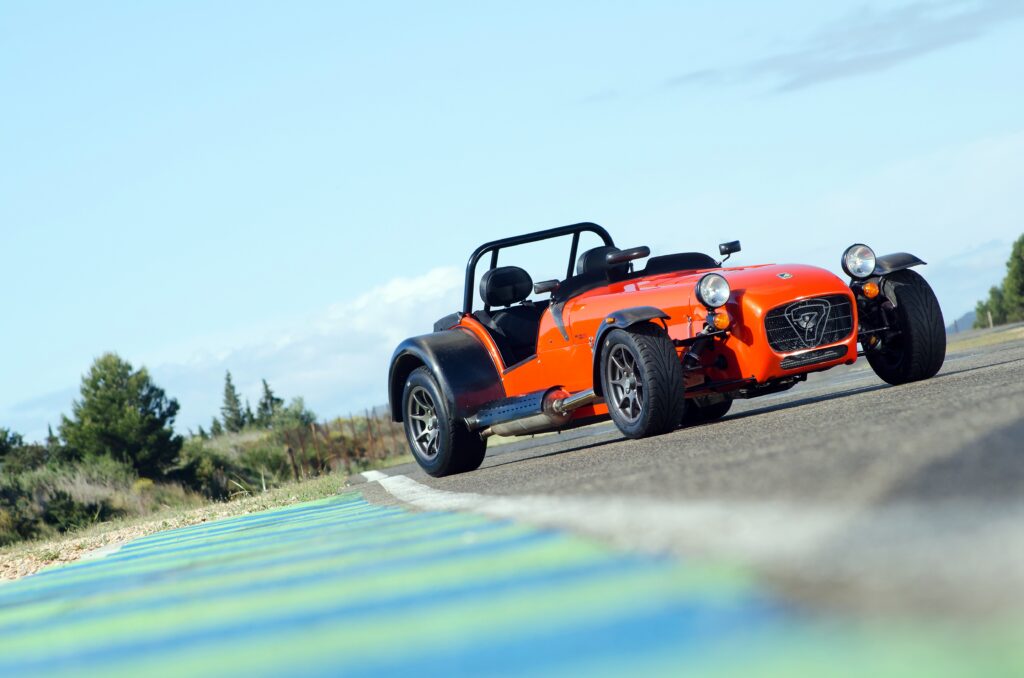
SUSPENSION AND BRAKES
Thanks to the car’s low weight, discs and pads last a very long time, even if used on track. Uneven tyre wear points to misaligned suspension, to which a Seven’s handling is very sensitive. Classic models and cars fitted with motorcycle engines have live rear axles; the rest have semi-independent de Dion rear ends.
“CSR models feature inboard pushrod front suspension and a fully independent double-wishbone set-up at the rear,” says Andy. “Front wishbones can corrode, but it is only aesthetic, and structural corrosion is very rare.”
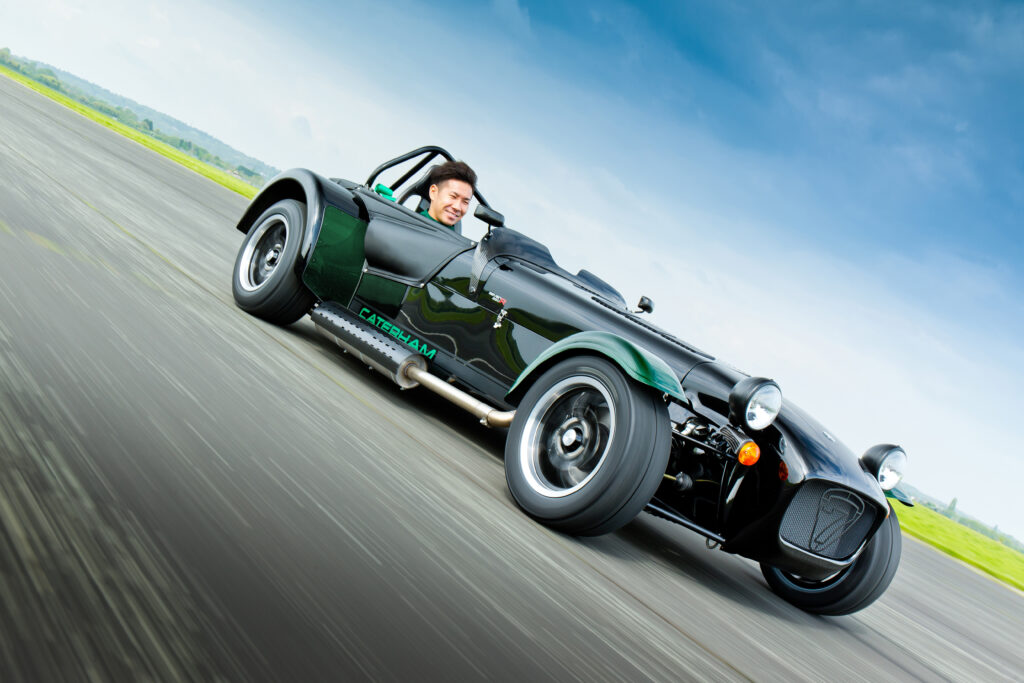
BODYWORK AND INTERIOR
Glassfibre and aluminium make up most of the panels, so they are not vulnerable to rust. Corrosion can still occur where the aluminium panels and steel chassis rails meet, however. Paint is also known to bubble on the lower skins, indicating underlying issues. Suspension components underneath commonly corrode, too. Aim to get any prospective purchase in the air, so that you can take a good look underneath. While the low ride height of the Seven means it can usefully be driven under parking barriers, this also means it is vulnerable to scraping from speed humps.
If you’re of a larger build, wider and longer SV cars are the best choice. This spec is a £2500 option new: “It can add up to £1500 on a used car over the S3,” says Andy.
Given that there’s not very much in the interior, there’s little to go wrong. Seat condition is worth checking, as bolsters can wear. Some owners climb in by standing on the base, so check here, too. The windscreen surrounds (if they’re present) are also subjected to wear, because people often use them for support when accessing the cabin. Some cars came optioned with lower floors for tall drivers; that extra depth can be well worth having.

WHICH TO BUY
Think about how you intend to use the car, and work it out from there. Searching for hardcore track-day thrills? Then the R models will provide plenty of adrenaline. If looking for some breezy weekend fun or something to tour in, the S, Roadsport, Classic and Sprint models will suffice.
If you’re on the larger side, a car in the larger SV specification might be essential. As mentioned, the lower floor specced in some cars is also a worthwhile option.
WHAT TO PAY
FAIR: £10,000
GOOD: £15,200
EXCELLENT: £22,400
CONCOURS: £33,800
SPECIFICATIONS:
Ford inline-four (1700 Super Sprint)
Power: 135bhp
Top speed: 111mph
0-60mph: 5.9 seconds
Rover K-series 1.8-litre inline-four (Roadsport)
Power: 122bhp
Top speed: 118mph
0-60mph: 5.8 seconds
